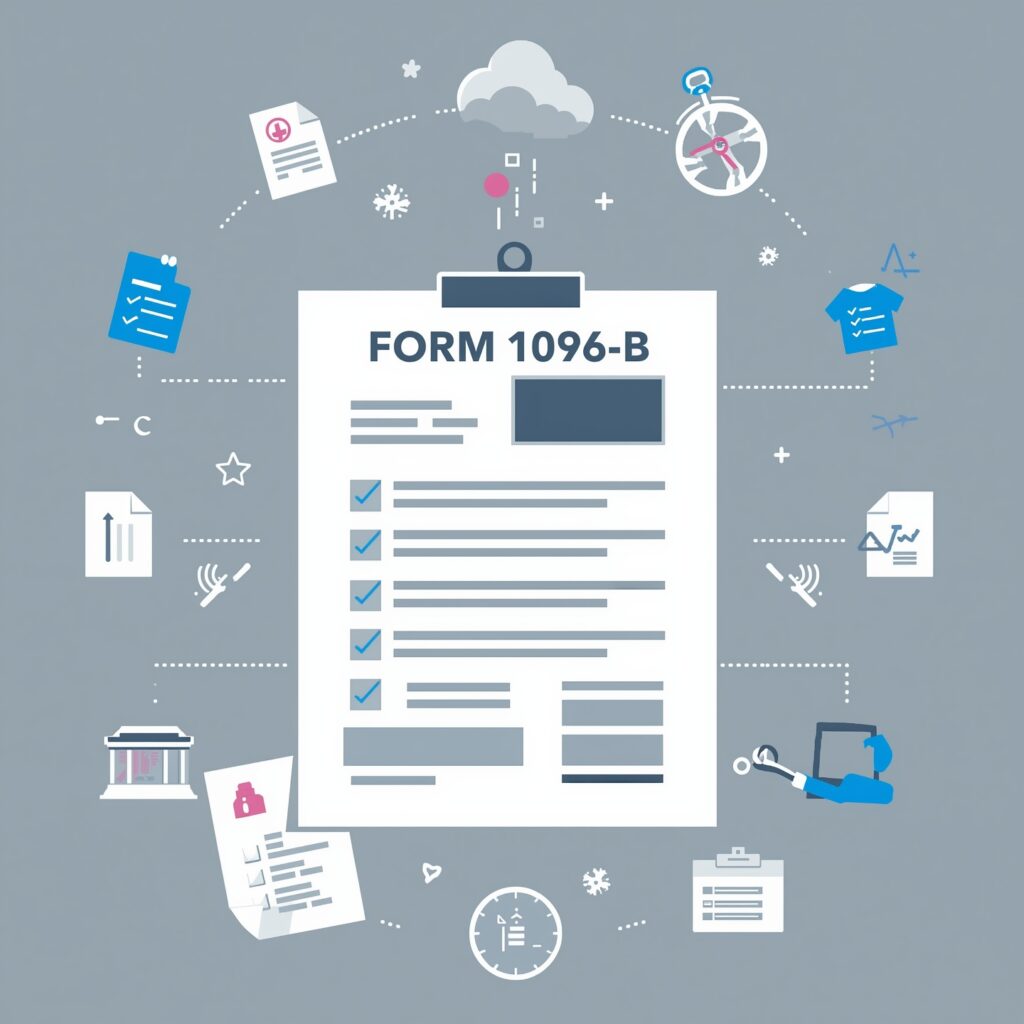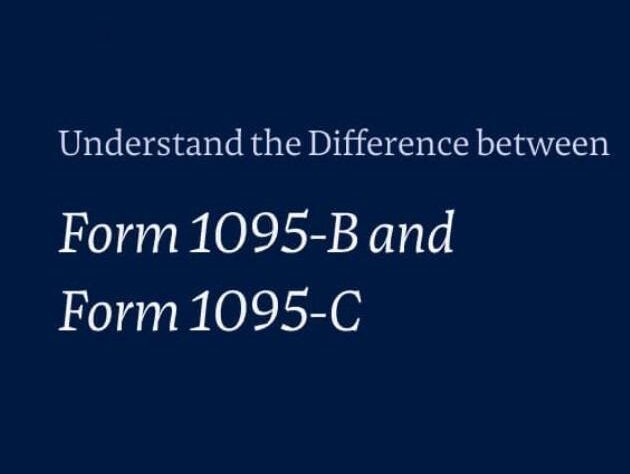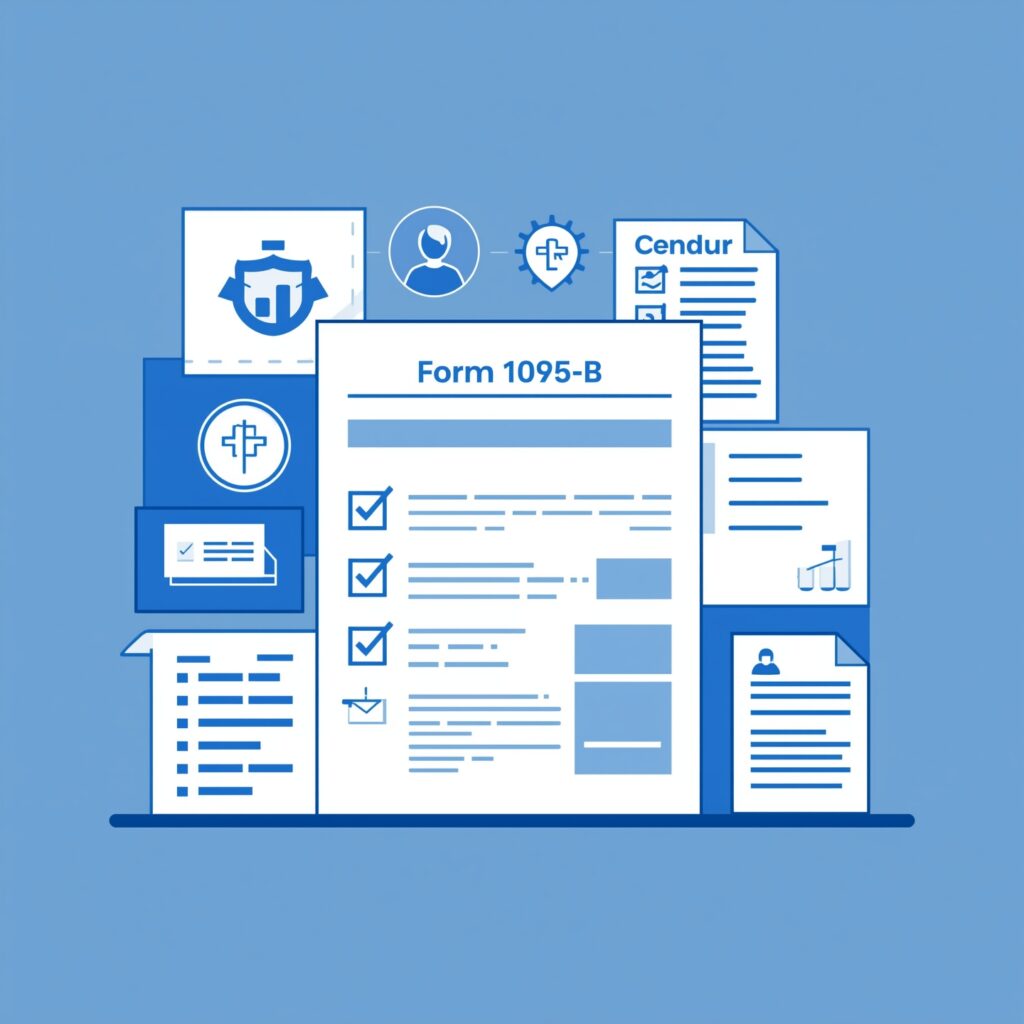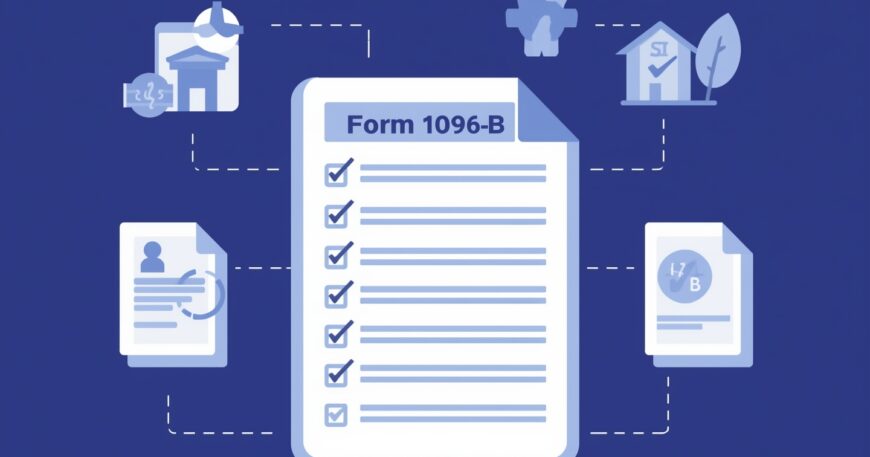Introduction
Navigating the complexities of tax forms can be daunting, especially when it comes to health coverage documentation. One such form that often raises questions is the Form 1095-B. This guide aims to demystify Form 1095-B, providing clarity on its purpose, how to obtain it, and its significance in the context of the Affordable Care Act (ACA).
What Is Form 1095-B?
Form 1095-B is a tax form used to report certain information to the IRS and taxpayers about individuals who are covered by minimum essential coverage under the ACA. It serves as proof that you and your dependents had the required health insurance coverage during the tax year, thereby exempting you from the individual shared responsibility payment.
Who Needs Form 1095-B?
Typically, individuals who are enrolled in government-sponsored programs such as Medicaid, Medicare, or the Children’s Health Insurance Program (CHIP) receive Form 1095-B. Additionally, small employers who provide self-insured health plans may also issue this form to their employees. Rippling+1healthinsurance.org+1
How to Obtain Form 1095-B
Form 1095-B is usually mailed to recipients by January 31 of each year. If you haven’t received it by mid-February, contact your health insurance provider or employer to request a copy. In some cases, you may need to log in to your online account with your insurer or employer to download the form.
Understanding the Form’s Sections
Form 1095-B consists of several parts:
-
Part I: Responsible Individual – This section includes the name and taxpayer identification number of the individual responsible for the health coverage.
-
Part II: Issuer or Other Coverage Provider – Details about the insurance company or other entity providing the coverage.
-
Part III: Covered Individuals – Information about each individual covered under the policy, including months of coverage.
Each part provides specific information required for accurate tax reporting.

Form 1095-B vs. Form 1095-C
While both forms report health coverage information, they differ in who issues them and the type of coverage reported:
-
Form 1095-B: Issued by insurance providers and government programs, reporting on individuals covered by minimum essential coverage.
-
Form 1095-C: Issued by large employers (50 or more full-time employees) offering health insurance coverage, detailing the coverage offered to employees.
Common Mistakes to Avoid
-
Not keeping the form: Even if not required for filing, retain Form 1095-B for your records.
-
Misunderstanding the form’s purpose: Recognize that Form 1095-B is for informational purposes and not required for federal tax filing unless mandated by state law.
-
Ignoring state requirements: Some states have their health coverage mandates and may require Form 1095-B for state tax filings. Verywell Health
Importance of Form 1095-B in Tax Filing
While Form 1095-B is not required for federal tax filing, it may be necessary for state tax returns in certain jurisdictions. Additionally, it serves as a record of your health coverage, which can be useful in verifying coverage during the tax year.
Frequently Asked Questions
Do I need Form 1095-B to file my taxes?
Not for federal taxes. However, some states require it for state tax filings.
What should I do if I haven’t received Form 1095-B?
Contact your health insurance provider or employer to request a copy.Medicare+28Rippling+28healthinsurance.org+28
Can I file my taxes without Form 1095-B?
Yes, for federal taxes. Ensure you have other necessary documents like Form W-2 or 1099.
Conclusion
Understanding Form 1095-B is crucial for maintaining accurate health coverage records and ensuring compliance with state tax requirements. By familiarizing yourself with its purpose and how to obtain it, you can navigate the tax filing process with greater confidence.
Additional Insights on Form 1095-B: What You Need to Know
Understanding Health Coverage Reporting under the ACA
The Affordable Care Act (ACA) requires that all individuals have health coverage that meets specific standards, and Form 1095-B is used to report this coverage. While the form itself isn’t necessary for filing federal taxes, it is crucial for meeting state-level mandates, especially in places like California, Massachusetts, and New Jersey.
For many individuals, receiving this form provides peace of mind, as it verifies that they had minimum essential coverage during the tax year. Let’s explore some of the frequently asked questions (FAQs) that can help you better understand Form 1095-B and related topics.
Form 1095-B: A Crucial Document for Affordable Care Act Compliance
One of the most common questions taxpayers have about Form 1095-B is whether they are required to submit it when filing taxes. The answer typically depends on your location and the nature of your health coverage. If you live in a state with individual mandates, the form may be required for your state tax filing. However, even if it’s not required, it’s still important to keep it for your records as proof of health coverage.
Differences Between Forms 1095-A, 1095-B, and 1095-C
-
Form 1095-A: This form is for individuals who purchased coverage through the Health Insurance Marketplace. It’s used to report the health insurance coverage provided by the Marketplace and to calculate premium tax credits.
-
Form 1095-B: Used for individuals covered by insurance providers or government programs, such as Medicaid or CHIP. This form reports that you had the required coverage for the year.
-
Form 1095-C: This form is provided by large employers (those with 50 or more full-time employees) and details the health insurance options offered to employees, including the affordability of those options.
Understanding the distinctions between these forms is crucial for determining your filing requirements and for maintaining comprehensive health coverage records.
How to Handle Form 1095-B When Filing Your Taxes
If you’ve received Form 1095-B, here’s what you need to know for tax filing:
-
Keep It for Your Records: Even if you don’t need to submit the form, it’s important to keep it with your tax documents for future reference.
-
Verify Accuracy: Check the details on Form 1095-B for accuracy, such as your personal information, coverage dates, and covered family members. If any information is incorrect, contact your insurance provider for corrections.
-
Use It for State Filing (If Applicable): Some states require proof of health coverage for state tax returns. In this case, Form 1095-B serves as that proof. Be sure to review your state’s specific requirements to determine if you need to submit the form with your state taxes.
What to Do if You Don’t Receive Form 1095-B
If you’re expecting Form 1095-B but haven’t received it by the end of January, follow these steps:
-
Contact Your Insurer or Employer: Reach out to your health insurance provider or employer (if applicable) to request the form.
-
Check Online Accounts: Some providers make the form available for download on their online portals, so check there as well.
-
Wait Until Mid-February: If you haven’t received the form by mid-February, it may be worth contacting them again, as sometimes mail delays occur.
Conclusion: Navigating Tax Filing with Form 1095-B
While Form 1095-B might not be necessary for filing your federal tax return, it remains an important document for individuals who need to confirm their health coverage status under the ACA. For residents in states with specific mandates, this form can be critical for meeting those requirements. Understanding its purpose, how to obtain it, and how to use it will streamline the process and help ensure you’re compliant with health coverage reporting requirements.
FAQs on Form 1095-B:
Do I need to file Form 1095-B with my taxes?
For federal taxes, you don’t need to file Form 1095-B. However, some states require it for state taxes. Always check your local tax laws for requirements.
What should I do if my Form 1095-B is incorrect?
If you find an error, contact your insurance provider or employer immediately to request a corrected form.
Can I file my taxes without Form 1095-B?
Yes, you can still file your taxes without Form 1095-B, but it’s important to keep it for your records, especially if you live in a state with an individual mandate.
How do I obtain Form 1095-B online?
Some insurance companies and employers provide the form online through their portals. Log in to your account to check for digital copies.

Form 1095-B: Key Benefits and Implications for Your Tax Filing
Form 1095-B plays an important role in ensuring compliance with the Affordable Care Act (ACA). Although it is mainly an informational form, it holds significant value, especially for individuals living in states with specific health coverage mandates. Let’s continue to break down the various aspects of this form and its implications.
The Role of Form 1095-B in Health Coverage Verification
Health Coverage Verification for Tax Purposes
Form 1095-B serves as proof that you had health coverage for each month of the tax year. When you file your taxes, the IRS uses this form to verify that you met the ACA’s minimum essential coverage requirements. While the IRS no longer enforces the individual mandate for federal taxes (after the repeal of the penalty for most states), several states still require individuals to provide proof of health coverage for their state tax returns.
Form 1095-B and the ACA’s Individual Mandate
The individual mandate under the ACA required individuals to maintain health coverage or face a tax penalty. Although the penalty has been eliminated for most taxpayers, individuals in certain states, such as California, Massachusetts, New Jersey, Rhode Island, and Vermont, are still required to maintain coverage and provide proof when filing state taxes.
If you reside in one of these states, your Form 1095-B will be essential for your state tax filing. Even if the IRS no longer requires it for federal taxes, your state tax return may still demand verification of your health coverage for the tax year.
State-Specific Requirements for Form 1095-B
California
In California, Form 1095-B is necessary for all residents who are subject to the state’s health insurance mandate. Failure to submit the form could result in penalties or fines for not maintaining minimum essential coverage.
Massachusetts
Massachusetts requires all residents to maintain health coverage under its state-level individual mandate. The state’s tax return requires proof of coverage, which Form 1095-B provides.
New Jersey
New Jersey reinstated its mandate in 2019. Taxpayers must provide proof of health coverage, and Form 1095-B is an acceptable document for this purpose.
Rhode Island
Rhode Island also requires residents to maintain health coverage and submit proof with their state tax returns, which includes submitting Form 1095-B.
Vermont
Vermont residents must also adhere to a health coverage mandate, and Form 1095-B is necessary for verifying compliance when filing taxes.
It’s important to understand the state-specific mandates as they differ from federal requirements. Always check with your local tax authority to ensure compliance.

How to Keep Track of Your Form 1095-B
To stay organized and ready for tax season, here’s what you can do to keep track of your Form 1095 B:
-
Save the Form in Your Tax Folder:
When you receive your Form 1095 B, store it with your other tax documents (e.g., W-2, 1099 forms). Keeping all your tax-related documents together helps ensure you don’t miss anything when it’s time to file. -
Check Your Online Account:
Many health insurers and employers offer digital versions of Form 1095 B via their online portals. This is especially convenient if you misplaced the physical copy. Make sure to download and save it to your records. -
Review the Form for Accuracy:
Before filing, carefully review the information on Form 1095 B to ensure there are no errors, such as incorrect dates or covered individuals. If any discrepancies are found, reach out to your insurance provider or employer for a corrected version.
What to Do If You Didn’t Receive Form 1095 B
If you haven’t received Form 1095-B, don’t panic. Here are the steps to take:
-
Contact Your Insurer or Employer:
Reach out directly to your insurance provider or employer’s HR department to request a copy. It’s possible the form was delayed or misplaced. -
Request a Replacement Form:
If the form has been sent but you have never received it, ask for a replacement. Insurance companies and employers are required to provide these forms, allowing them to issue duplicates. -
Wait for the Deadline:
If it’s past the end of January and you still haven’t received it, give your insurer or employer until mid-February to ensure the form has been properly sent out. -
Document Everything:
If you’re unable to obtain Form 1095-B, document your attempts to request the form for future reference. While this won’t absolve you from meeting state mandates (where applicable), it can help you in case of an audit or further inquiry.
Additional Tips for Handling Health Insurance Forms
When managing Form 1095-B, here are a few additional tips to ensure a smooth tax filing experience:
-
Store All ACA Forms: Along with Form 1095-B, keep other related forms like Form 1095-A (Marketplace insurance) and Form 1095-C (employer-provided coverage) in the same place. These forms provide valuable information about your health coverage, and having them readily available ensures that you can respond to any tax inquiries quickly.
-
Review Your Health Coverage Yearly: As health plans and insurance coverage options can change from year to year, take time to review your coverage annually to make sure it meets the ACA’s requirements. This helps you avoid any issues when filing future tax returns.
-
Check for State-Level Mandates: If you live in a state with a health insurance mandate, ensure you understand the filing requirements for that state. States like California, New Jersey, and Massachusetts will require proof of health coverage, and having the right form (Form 1095-B) is crucial for compliance.
Conclusion: Why Form 1095-B is Key for ACA Compliance and Tax Filings
Form 1095-B remains an important document for individuals who are subject to health coverage mandates, whether under the federal Affordable Care Act (ACA) or state-specific requirements. Understanding the role of this form, especially in states with their health insurance mandates, helps ensure that you maintain compliance and avoid unnecessary penalties.
By knowing when and how to obtain Form 1095-B, verifying the details for accuracy, and ensuring that you store it with your tax records, you can navigate tax season with confidence and clarity.
FAQs on Form 1095-B:
Is Form 1095-B required for federal tax filing?
No, Form 1095-B is not required for most federal tax filings, but it may be necessary for state tax returns in states with individual mandates.
What if I don’t have Form 1095 B but live in a state with a mandate?
If you live in a state with a health coverage mandate, you must provide proof of coverage. If you don’t receive Form 1095-B, contact your insurance provider or employer for assistance.
How can I obtain Form 1095-B online?
Many health insurers and employers provide digital copies of Form 1095-B on their online portals. Check there first if you’ve not received a physical copy.
Can I file my taxes without Form 1095-B?
You can still file your taxes without Form 1095 B, but it’s important to have it for state tax returns in states with health coverage mandates. Be sure to keep it for your records.
Why Choose Syed Professional Services?
If Syed Professional Services is involved in a specific industry, such as tax assistance, financial advisory, or business consulting, the choice often stems from:
-
Expertise and Experience: Professionals like Syed often have specialized knowledge and years of experience in their field. This makes them ideal for handling complex tasks such as tax filing, form preparation (like Form 1095 B), or other professional services that require expertise.
-
Customized Solutions: A professional service provider can tailor solutions to meet your unique needs, whether it’s managing business finances, providing health insurance advice, or offering personalized tax consultation. They help you navigate complicated processes and achieve specific objectives.
-
Trust and Reliability: Working with established professional services can offer peace of mind. These services are often trusted by clients to get the job done with attention to detail and a high level of professionalism.
What Can Syed Professional Services Do for You?
Based on the assumption that Syed Professional Services specializes in areas like tax preparation, consulting, or business solutions, here’s what they can offer:
1. Tax Preparation and Filing Assistance
Syed Professional Services could assist with filing forms like Form 1095-B, ensuring that clients comply with health coverage mandates, whether at the federal or state level. They may also help with:
-
Understanding complex tax documents
-
Navigating health insurance mandates in various states
-
Ensuring proper tax deductions and credits are claimed
2. Business Consulting
For businesses, Syed Professional Services might offer strategies to optimize operations, including:
-
Market analysis and competitor research
-
SEO and digital marketing strategies
-
Financial management, budgeting, and forecasting
3. Health Insurance Guidance
For individuals navigating health insurance options, particularly under the Affordable Care Act (ACA), Syed Professional Services may offer expert advice on:
-
Choosing the right health plan
-
Filling out relevant forms like Form 1095-B or Form 1095-C
-
Providing support for both personal and business-related health insurance needs
4. Financial Advisory
In addition to tax services, Syed Professional Services may offer financial planning, helping clients with:
-
Retirement planning and savings strategies
-
Investment advice and portfolio management
-
Estate planning and wealth transfer




